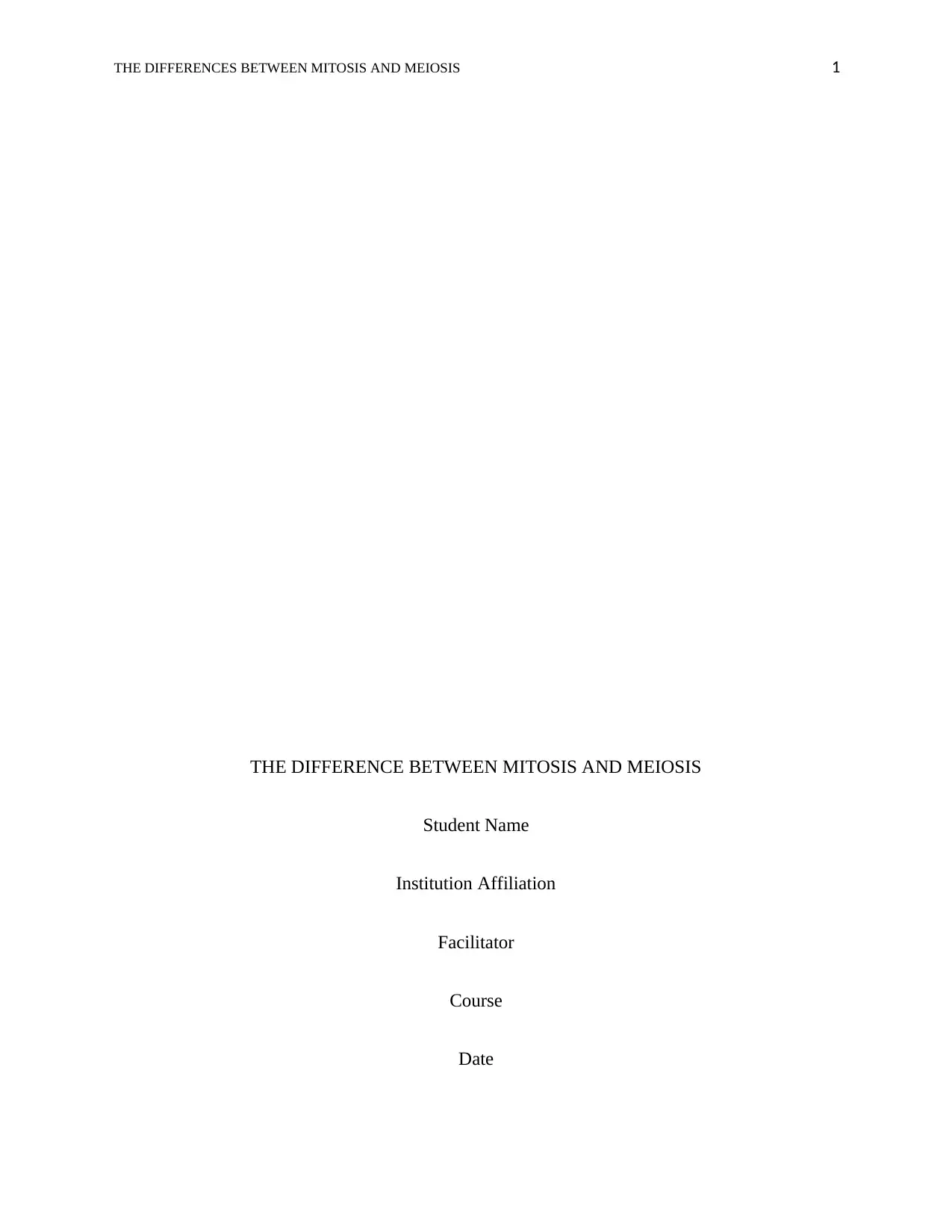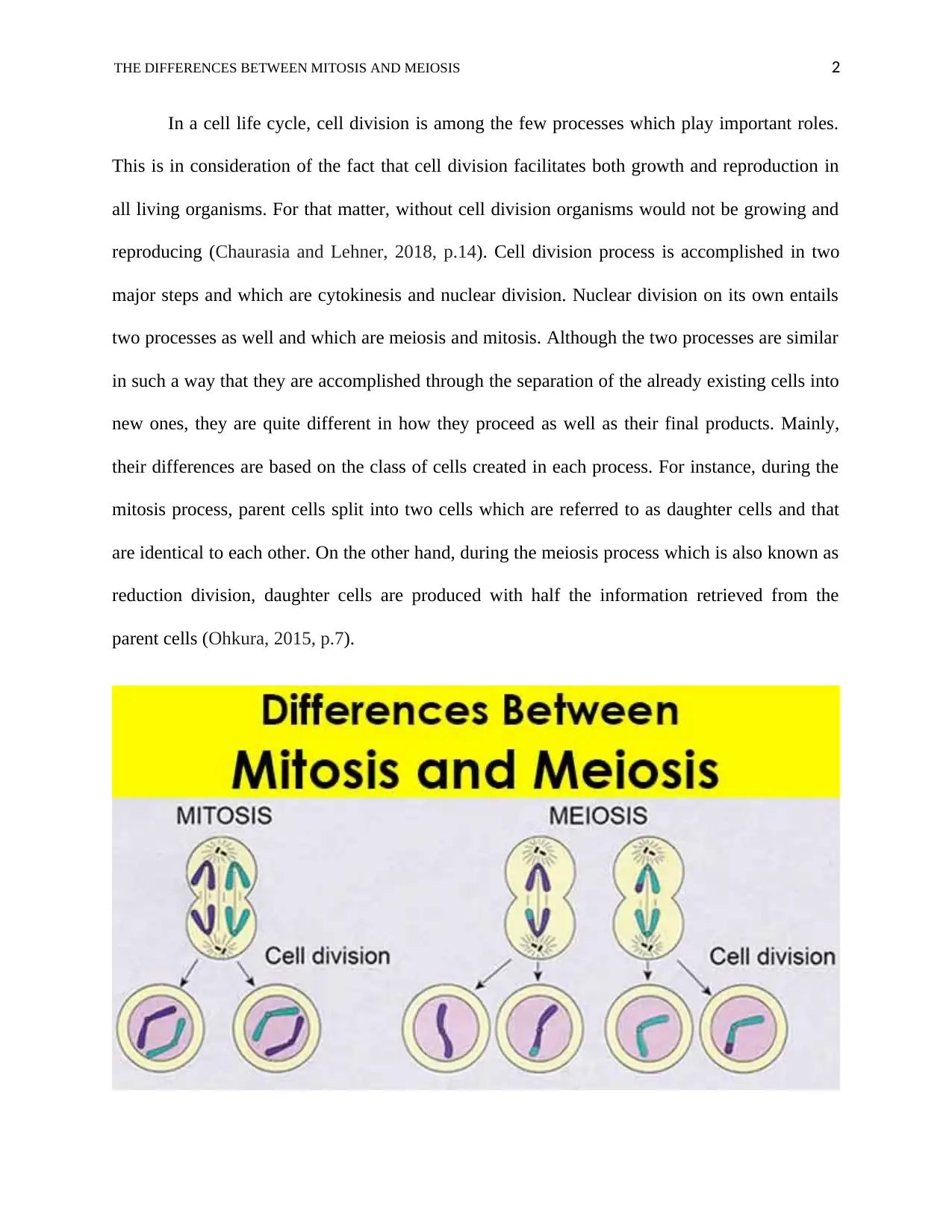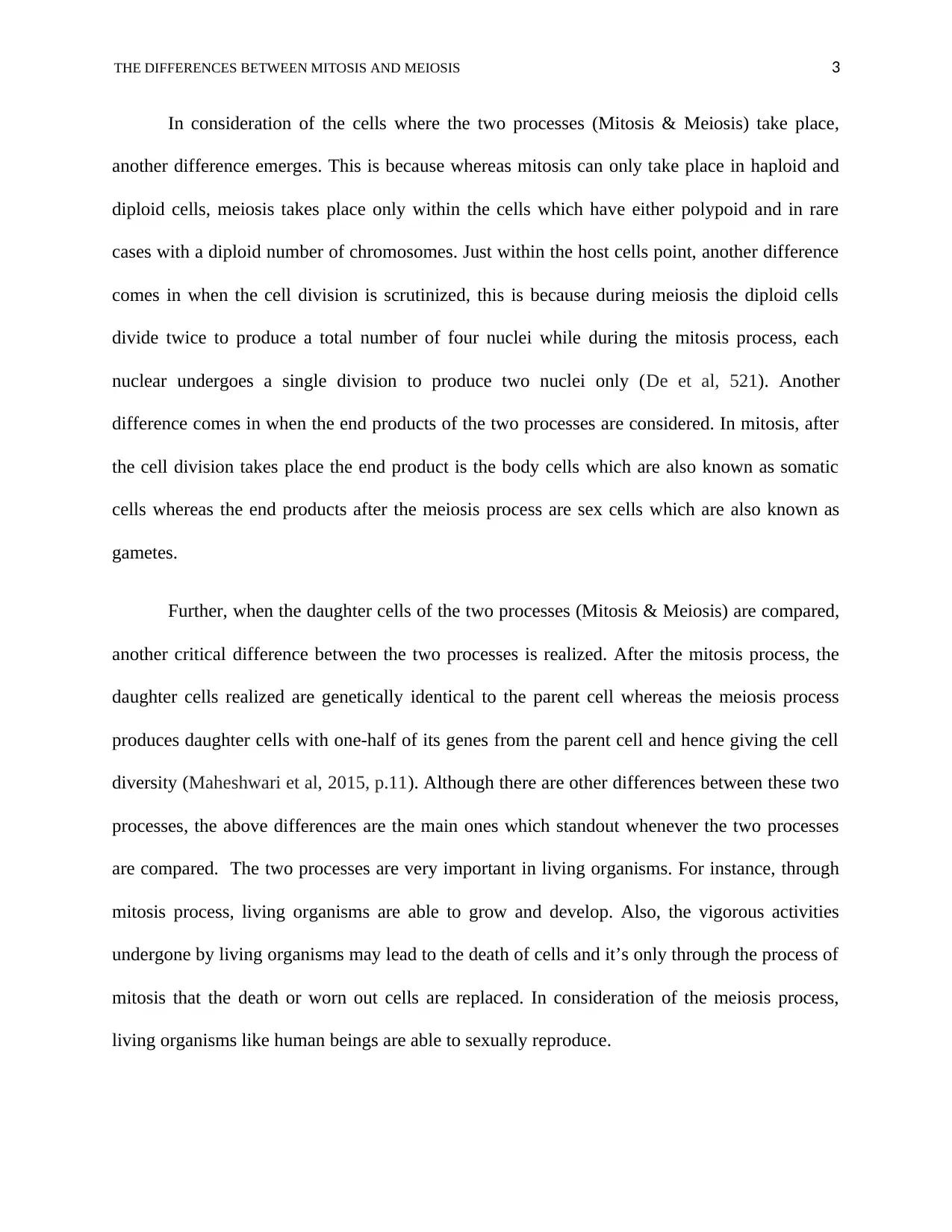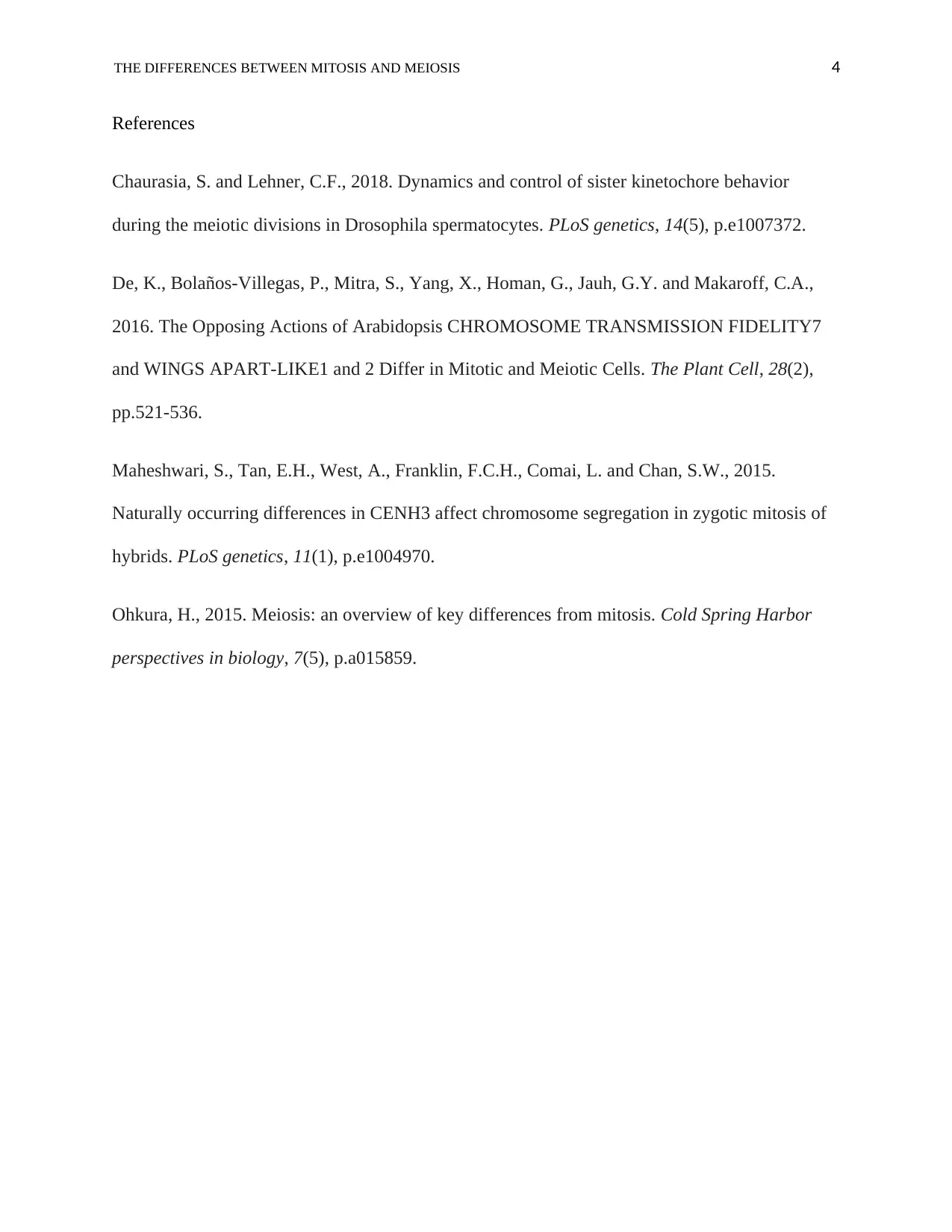Comparing Mitosis and Meiosis: Processes and Biological Significance
VerifiedAdded on 2023/04/21
|4
|796
|367
Essay
AI Summary
This essay elucidates the distinctions between mitosis and meiosis, two fundamental processes of cell division. Mitosis involves the division of a parent cell into two identical daughter cells, occurring in haploid and diploid cells and resulting in somatic cells. In contrast, meiosis, also known as reduction division, produces four daughter cells with half the genetic information of the parent cell, exclusively taking place in polypoid or diploid cells and resulting in gametes. The essay highlights that mitosis involves a single nuclear division, while meiosis involves two. Mitosis leads to genetically identical daughter cells, whereas meiosis introduces genetic diversity. The importance of mitosis in growth, development, and cell replacement, and the role of meiosis in sexual reproduction, are also emphasized. Desklib provides access to similar solved assignments and resources for students.
1 out of 4











![[object Object]](/_next/static/media/star-bottom.7253800d.svg)